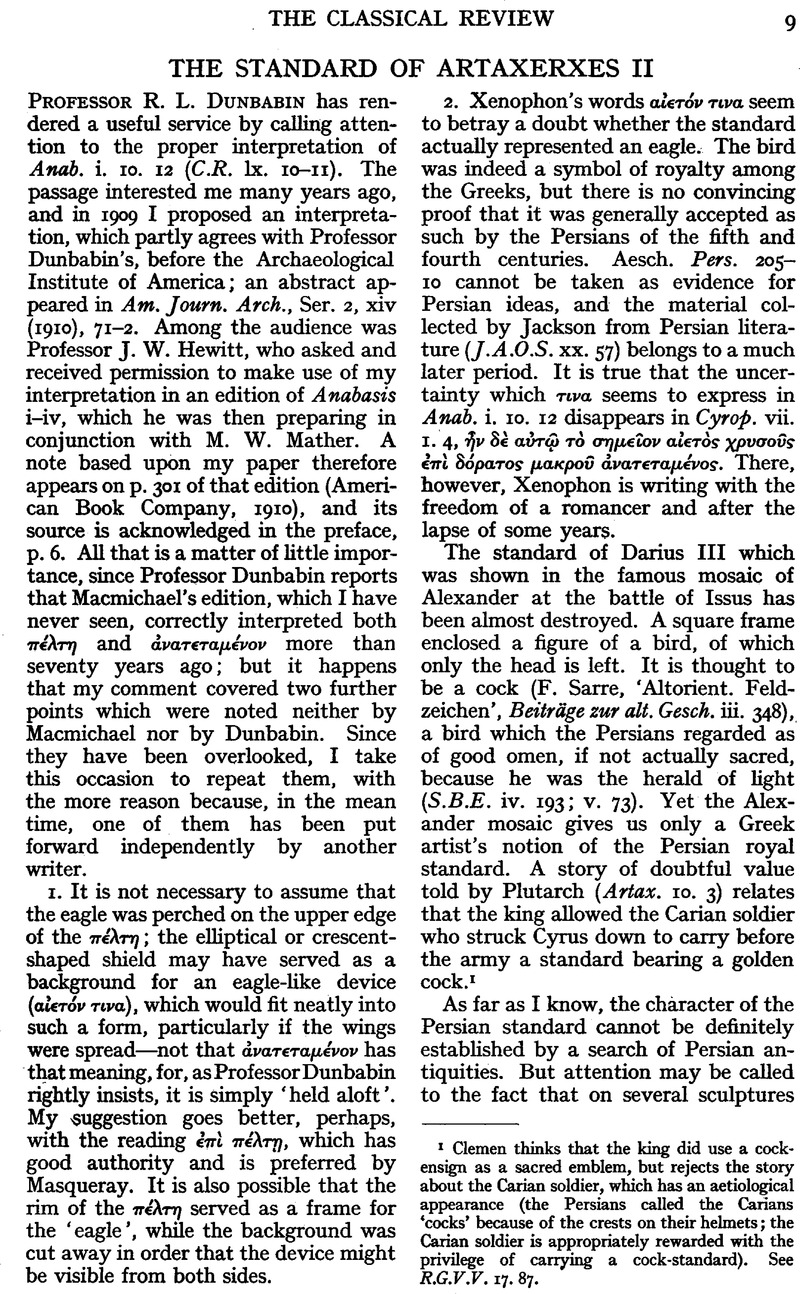Article contents
The Standard of Artaxerxes II
Published online by Cambridge University Press: 27 October 2009
Abstract

- Type
- Review Article
- Information
- Copyright
- Copyright © The Classical Association 1947
References
page 9 note 1 Clemen thinks that the king did use a cockensign as a sacred emblem, but rejects the story about the Carian soldier, which has an aetiological appearance (the Persians called the Carians ‘cocks’ because of the crests on their helmets; the Carian soldier is appropriately rewarded with the privilege of carrying a cock-standard). See R.G.V.V. 17. 87.
page 10 note 1 For convenience I refer to the easily accessible English translation of Perrot and Chipiez's Hist.of Art in Persia, figs. 112,156,189—91,200, 216, and the plate facing p. 218.
page 10 note 2 MissTaylor's, opinion(J.H.S. 67. 56)Google Scholar that it is really the fravashi or δаίμων of the king is favoured by the close resemblance between the human figure in the winged circle and the monarch over whom it appears. In general, however, the evidence indicates that the figure is the god or his fravashi (Moulton, Early Zoroastrianism, 260).
page 10 note 3 MrGow, A. S. F. recognized this possibility(J.H.S. 68. 139), not knowing that I had previously mentioned it. His Plate IX gives some excellent illustrations of Persian seals that sho the winged emblem.Google Scholar
page 10 note 4 Pilcher, E. J., Proc.Soc. Bibl. Arch., 1910, 93—101, 143—52.Google Scholar
- 1
- Cited by




